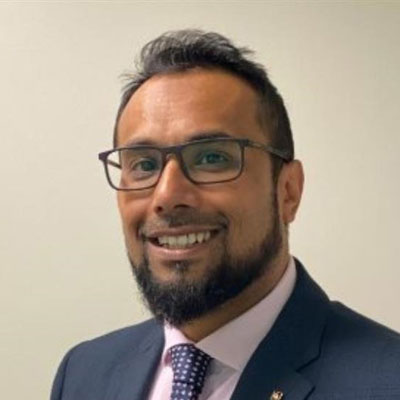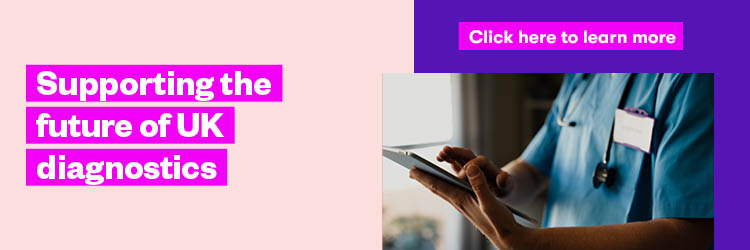
Professor Sultan Mahmud
Director of Healthcare, BT
Following studies of patients and clinicians, the message is clear from people inside and outside of the NHS: we need to embrace digital tech and cut wait times.
Every day, healthcare frontline professionals across the nation are having to make life-changing — or life-saving — decisions. Our mission at BT is to support them and follow their lead in areas like diagnostics, which is a critical part of the patient journey, with the NHS carrying out over 1 billion diagnostic tests every year.
Opportunity for AI to mitigate diagnostics challenges
However, there are still over 1.5 million people waiting for an NHS diagnosis in the UK. As well as rising demand and a growing backlog, the NHS has a shortfall of skilled diagnostic professionals; with a 39% shortfall in radiology and pathology staff alone. It also relies on many outdated legacy technologies that aren’t suitable for modern demands.
The appetite to embrace change is there. Research shows that three-quarters (74%) of NHS staff believe that future investment in the health service should focus on digital technologies that can improve access to diagnosis and care. The Government also sees the potential benefits, announcing a £21 million fund to boost AI’s adoption throughout the NHS.
Finding the right AI tech
Although AI is already being brought into diagnostics, it requires streamlined implementation to ensure clinical workflow is optimised. There are hundreds of innovative companies developing AI tools, and these curated models are trained to do one job incredibly well.
The first challenge is matching the right AI technology with the problems hospitals need to solve — before onboarding each, individual tool. Whether that’s needing assistance with a cancer diagnosis or identifying fractures, complex onboarding tasks must be completed, which requires significant resource investment. These factors mean AI adoption can seem daunting.
As Dr Paul Bhogal, consultant interventional neuroradiologist at the Royal London Hospital and member of BT’s Clinical Advisory Board, suggests: “If we want to improve access to healthcare in the UK while improving patient outcomes, we must find technology that works and put it in the hands of those that can put it to work.”
Three-quarters (74%) of NHS staff see
future investments in tech as a priority.
Digital diagnostics platform for smarter working
BT is working with best-in-class healthcare partners to help free up doctors’ time using AI — and unlock the benefits of faster diagnosis for patients and clinicians safely and responsibly. For example, we recently launched a Diagnostics AI Marketplace, built in partnership with deepc. The marketplace brings together the best diagnostic AI tools from over 25 vendors.
Whether looking at an X-ray or an MRI scan, the platform displays an array of innovative tools that are best suited for the job. Accessible through one simple integration, there’s no need for multiple onboardings or significant upfront investment — key blockers of digital adoption.
The platform’s ability to integrate AI from trusted suppliers means that clinicians will always have access to the best solutions. Meanwhile, its versatility and ability to scale enables healthcare professionals to fully customise it to suit their needs.
The platform can speed up reporting and improve patient flow, increasing efficiency across diagnostic workflows and employee satisfaction. This will help doctors tackle the current backlogs, as well as manage seasonal pressures with cross-regional digital healthcare tools.
Implementation of modern diagnostics
Three-quarters (74%) of NHS staff see future investments in tech as a priority. That’s why we are co-creating a varied portfolio of solutions to help the NHS and other healthcare providers with their diagnostics challenges.
Faster image sharing (achievable through our work with AXON diagnostics) or the implementation of digital Patient Concierge (created with Soprano) must be top of the agenda for trusts across the nation.
The technology is available; what we need now is a coordinated approach. Only by working together can we move the dial on diagnostics and truly connect for good.
For more information, visit business.bt.com or contact [email protected] https://business.bt.com/public-sector/organisations/health/health-diagnostics/




